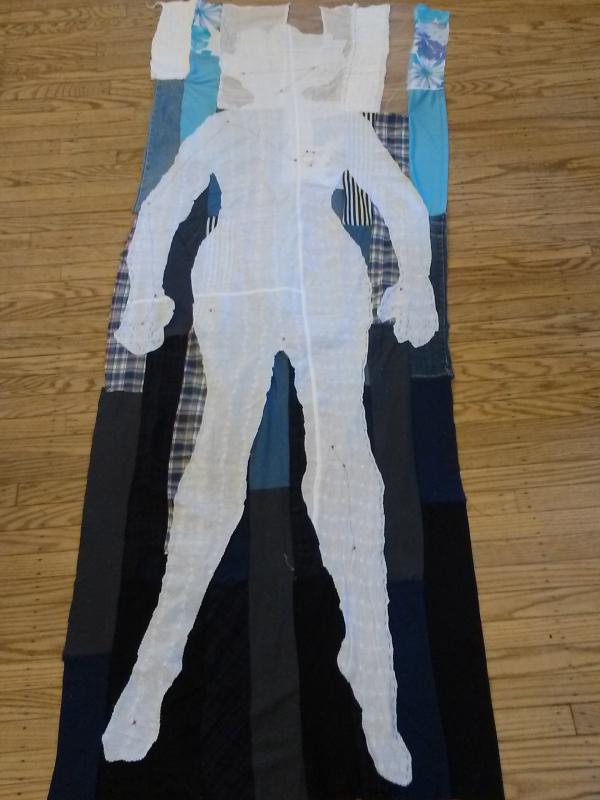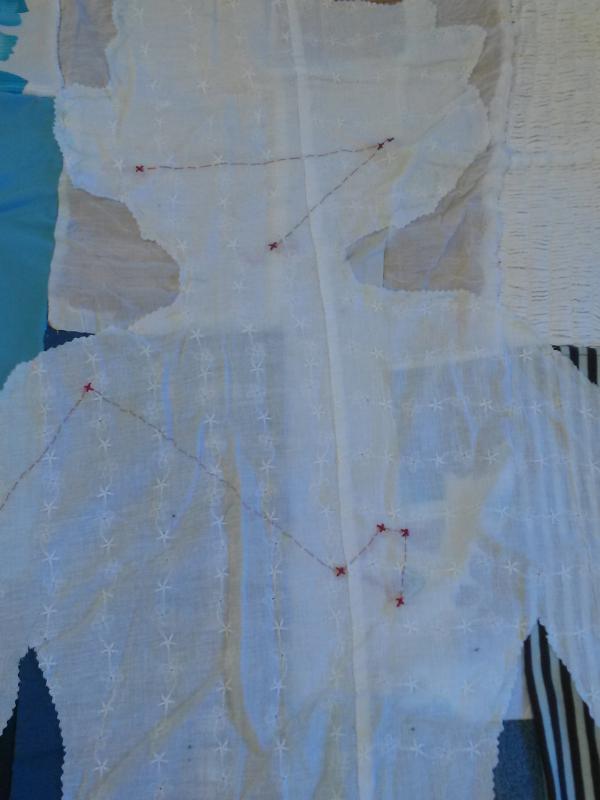Serendip is an independent site partnering with faculty at multiple colleges and universities around the world. Happy exploring!
y
Praxis Post
My placement is at a preschool literacy program for children whose families’ dominant language is Spanish. The majority, if not all of the children, are of Mexican descent. On Monday, we spent a significant amount of our structured time singing and dancing. Many of the songs and rhymes played were children’s songs that are in English and are part of an English speaking culture—The Hokey Pokey, the alphabet song, Jack Be Nimble, etc. When the teacher, Ms. L, played London Bridges, she also sang a version of a similar song/game in Spanish. She also played and had them dance to the pop song, Happy, and some of the children started to add in their own dance moves. When Ms. L was particularly impressed by a boy’s dancing/energy, she made comments about how he was going to have a lot of girlfriends when he grew up. After many songs in English, the children sang “De Colores” (in Spanish). Then, the teacher told them, “Niños (boys) on that side, and niñas (girls) on that side.” The two groups split up into lines of boys and girls. The boys were reminded to put their hands behind their backs, and the girls put their hand on their hips. The teacher then played The Mexican Hat Dance, and the children did a dance that they seemed to all know.

praxis
Today at my Praxis, the students were still in PSSA mode. The students were going to be sitting for the writing portion of exam on Friday. Mrs. C. explained to me that the students are required to write an essay for the PSSA's writing portion of the exam, but her 8th grade beginning level students had just been introduced to the concept of a paragraph. Mrs. C. was ecstatic that I came to praxis today because I was able to provide one-on-one attention to an extremely low level student. As Mrs. C. addressed the rest of the class, I worked one-on-one with Jamie*.

How can forming community partnerships directly inform students' interactions with others?
The 9th grade African American history students I work with have been working on their “Semester of Service” for almost two months now. This particular class wants to write children books about African American history in Philadelphia, which they will share with 3rd graders at a neighboring elementary school. For the last few weeks, however, the students who have been tasked with creating the stories and drawings for the picture books have been in a tough spot—they have struggled to agree on what they want produce, how many books, what types of stories, etc. Their lack of group vision has caused many of the students to grow frustrated, as it hasn’t felt like they are making progress.
But last week, something changed. My placement teacher invited a local artist who works extensively with children to visit class. She showed the children the books she creates with young kids, many of which incorporated not only stories and art but also unique structures—like cool pop-ups, cut-outs, and unique fabrics and other materials. After sharing these examples with the class, this artist began posing a lot of logistical questions regarding how many different books the students wanted to create, did they want duplicates of the stories, how big did they want the books to be, how long were the stories, etc.?

Sleeter and Methods for Teaching
I was excited to read the Sleeter because it was one of the first readings we had that offered concrete examples and ideas for way teachers could think about their teaching. I especially appreciated the suggestion to learn about students' communities and get to know where their positionality in order to better support learning, particularly because this is something I've thought a lot about in the context of a theory called "threshold concepts." Threshold concepts as I've come to understand them are extensive, transformative, learning experiences that utterly challenge and shift the way we approach a body of content, a discipline, or our understanding of ourselves.
The relevance of threshold concepts to Sleeter is the idea that threshold learning moments can happen and be supported by incorporating personal knowledge/expertise into theoretical and classroom learning. I've thought about this will a Bryn Mawr faculty member with whom I worked – and we discussed the way that students we've observed who've struggled to understand key concepts (within 360s specifically) have passed over that threshold with the support of personal connection-making:
Classroom Management
Sleeter's piece on Unstandardizing Cirriculum included some really engaging ways to incorporate students' personal experiences into the classroom as materials for cirriculum. The passage about how the teacher organized a classroom courtroom kind of relates to a challenge I'd noticed at my own Praxis: behavioral management. Angela wanted to incorporate group work and hands-on learning into her curriculum, but many times it would result in losing control of the classroom and taking away time from the lesson. Even if a teacher has a really interactive and well-planned lesson, if she cannot keep the students' attention focused, then she won't be able to facilitate the lesson in the way she wants to. Angela's courtroom simulation brought structure to the classroom by assigning each student with a specific role, and an interesting activity.
There are several students at my placement who, when upset, refuse to participate in activities and keep to themselves in silence or they might find very loud ways to direct the other students' attention towards them. It is not okay to just let the students who consistently act out keep on sitting out from activities. But it's also not okay for the teacher to spend too much time trying to get these students to participate, when the majority of the classroom is paying attention. In many cases, she just continues the lesson while avoiding the students who are trying to bring attention to themselves. I wonder what other ways incorporation of the students' experiences might make classroom management easier.

Sleeter in a High School History Context
I enjoyed Sleeter’s “Students as Curriculum” chapter quite a bit. I hope to teach high school history next year and one of my primary goals is to teach history in a relevant and meaningful way for high school students. Too often, I think, history courses get bogged down in dates, names, and events. I’m much more interested in the broader narratives that connect these events to each other and to our lived experiences. But in order to teach history in this connected, thematic way, I need to first understand my students and the experiences, assumptions, beliefs, etc. that they bring into the classroom and, then, I need to use this information to create my lesson plans and unit plans, etc. Sleeter writes that it is the “teacher’s responsibility to find out, become familiar with, and respect knowledge students bring to school, and to organize curriculum and learning activities in such a way that students are able to activate and use that knowledge” (p. 106). I agree whole-heartedly with this statement. I want my students’ knowledge to be the foundation of our lessons in history, particularly because topics like historical perspective and power are so central to the discipline.
Inquiry - Bilingual, ESL programs
For my inquiry project, I'm interested in researching bilingual education programs and ESL programs. Through externships and Praxis placements, I've been able to observe different classrooms that revolved around a bilingual classroom system. One was in second grade classroom where the students' native language was Spanish and the teacher (who was Latina American and could identify with her students' backgrounds) actively used Spanish in her lessons. Another was in a middle school classroom where the students were primarily Haitian immigrants, and the teacher (of a Caucasian Jewish American background) had knowledge of French but didn't really use it in the classroom, and there appeared to be a large disconnect between her and the students.

Quilt
I originally made this quilt for an art class while abroad. The theme of the class exhibition was mapping, and I decided to make that very personal and map my body. I chose the medium of quilting because my grandmother and great-grandmother both quilted and because of it's association with traditionally feminine crafting techniques. I wanted to disrupt and question traditional assumptions about feminitity – leaving the edges rough and patches unfinished.

The body on the quilt is a cut-out of my own body, and the red crosses embroidered into it mark some of my visible and invisible scars. I wanted to make visible my vulnerabilities and "flawed" spots, aspects of myself that tend to remain covered up, hidden, or silenced.


Praxis – Identity Focus Groups
My praxis placement is based on-campus, where I'm working to facilitate conversations about identity and perception of identity. The goal of the groups is to offer suggestions to the President's office to make changes on campus which will better support students from diverse backgrounds on campus. The week before break, I had the opportunity to co-facilitate a focus group for the first time, and just this week I facilitated my second group. It was a rewarding and challenging experience. I needed to figure out how to act as an engaged and active listener, while also guiding the participants to think critically about themselves, taking notes, thinking about broad themes, and coming up with follow-up questions to responses. It's a balancing act that I imagine is similar for teachers leading discussions –– who also need to recognize the themes their students are bringing up and challenge their students (and themself) to think more deeply about the content. I also have to be aware of my own positionality. Sometimes my identities overlap with those of the participants, but often they do not or they simultaneously overlap in some ways and don't in others. And even with overlap, opinions and experiences differ enormously. This experience has echoed my understanding of Ellsworth's theories on dialogue. However, it has also reinforced my belief that in spite of a necessary failure to ever entirely understand one another, dialogue with others is still important to and even necessary for knowledge building.
Inquiry Proposal--Bilingual Literacy Programs in Early Education
I want to look at bilingual literacy programs in early education (preschool and kindergarten). I’ve seen a number of approaches to literacy in early classrooms, from majority play to majority structured work on letter sounds and reading, so I’m interested in looking at the differences in programs, and especially how the programs in bilingual schools relate to the students’ and their families home practices and experiences with language. I’m interested in looking at how and which languages are privileged (or not) in these classrooms, and how this may vary depending on the teacher, the students, and the larger community. I think I would like to interview my placement teacher, who teaches at a preschool literacy program for mostly Spanish speaking kids, as well as some of the preschool and kindergarten teachers at the bilingual school I was working at last semester in Costa Rica. While I will mostly want to look at educational research from classrooms, there is also a fair amount of psychological research about the process of bilingual language development, and I’m thinking about incorporating some of that as well.


